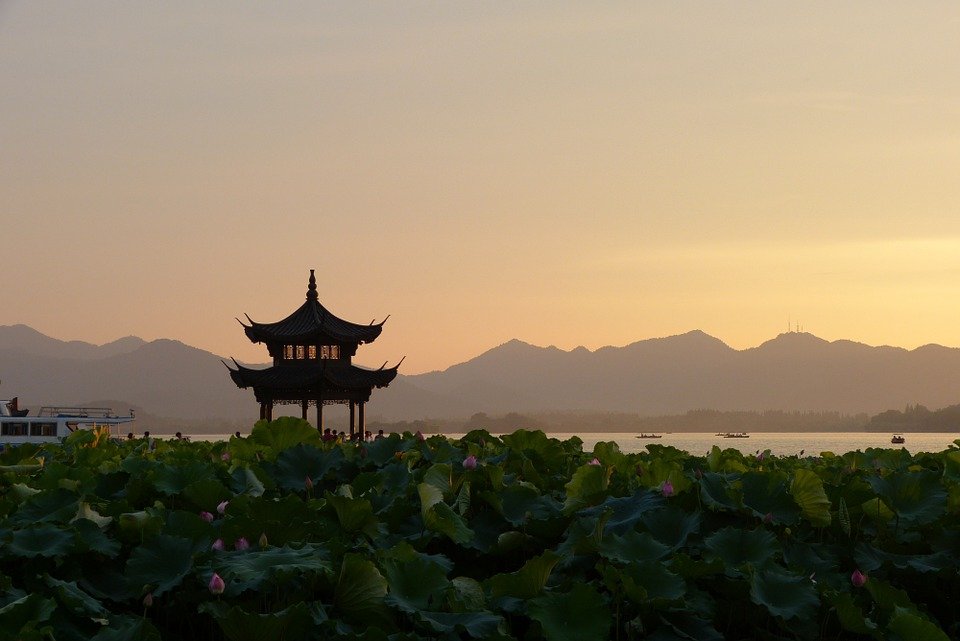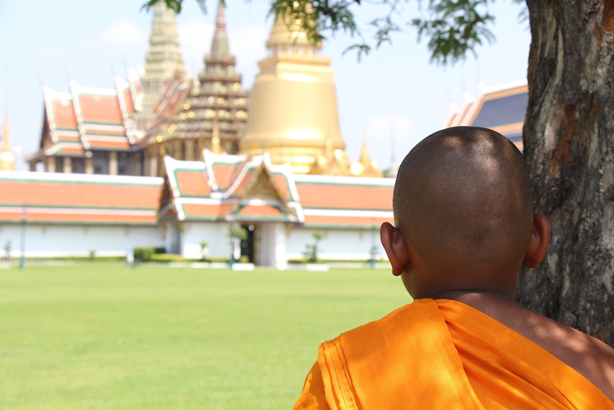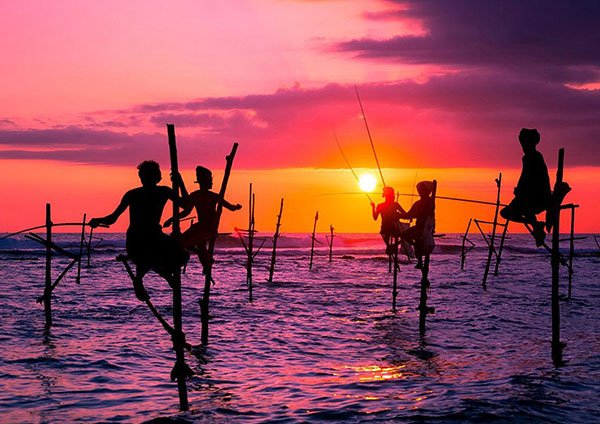20 Buddhist Monuments To Visit Before 2020 – Part I
Buddhism started in the Indian subcontinent, but soon spread throughout Asia. And with the expansion of boundaries, several marvellous monuments were built in different locations, some dating back hundreds of years. Visiting these places can be a traveller’s ultimate journey, which ticks all the boxes, like history, architecture, serene beauty, nostalgia, and deep-rooted culture.
Here are 20 places which every traveller and cultural lovers must visit before 2020:
1. Kanheri Caves – Mumbai, India
Kanheri Caves are situated on the outskirts of one of the busiest cities in the world, and India’s economic capital, Mumbai. The structure was built over a 2000 years ago, and was the Buddhist centre of congregation, meditation, and learning in Western India.
Currently situated amidst Sanjay Gandhi National Park, one of the rare forest reserves of the island city, Kanheri Caves will mesmerize you the moment your eyes drop on them. Carved out of a single basalt rock, the structure is a home to over 109 separate caves, with a grand congregation centre.
However, there’s more to it just than being an architectural marvel. Between 1st Century BC to 10th Century AD, the caves were the centre of learning and spirituality in the country. Some of the most learned, and spiritual personalities of the golden era visited the Kanheri Caves, through whom thousands were enlightened. So once you are there, just close your eyes, and let the nostalgia take over.
2. Shwedagon Pagoda - Yangon, Myanmar
Myanmar or Burma, has been one of the most renowned Buddhist countries, and is among the first countries to embrace Buddhism outside the subcontinent. Prior to the recent horrific events, the country had a history of rich Buddhist culture for thousands of years. One of the most prominent parts of the Burma's Buddhist culture is the Shwedagon Pagoda, in the town of Yangon.
Shwedagon Pagoda, the most sacred Buddhist structure in Myanmar, was built in the 6th Century AD, making it one of the oldest pagodas in the world. The structure, unlike the ones in other countries, still resembles Buddhist architecture of yore in all its glory. The majestic golden structure reminds us about the numerous kings and queens from various dynasties who humbled themselves at the biggest Pagoda in Burma.
The most amazing part is not the structure itself, but a story behind it. As per local folklore, two brothers, Taphussa and Bhallika from Southeast Asia met Gautama Buddha, and were gifted three hairs of the ‘Enlightened One'. They stored those hairs in a golden trunk, and buried it in a place, which came to be known as the Shwedagon Pagoda. Commemorating the sacred relics, a grand structure was built around it, which stands till date.
3. Fo Guang Shan Monastery - Kaohsiung, Taiwan
Taiwan is on of the few countries in the world which houses the modernized versions of Buddhism, and Fo Guang Shan monastic order is one of them. It follows a humanistic side of Buddhism, more than the spiritual one, and the Fo Guang Shan Monastery is a perfect symbol of this.
Situated in the mountainous Kaohsiung region of Taiwan, the the Fo Guang Shan Monastery is the largest in Taiwan. It was built in the year 1967, and is one of the best monasteries built in modern history. Built on the bamboo hills on the banks of Gaoping River, the monastery is the perfect amalgamation of natural beauty and cultural heritage.
Typical Buddhist architecture, huge pagodas, meditation centres, and congregation halls, the monastery has every ingredient of traditional charm. However, the only difference is that unlike other functional ones, you find more tourists than monks at the Fo Guang Shan Monastery. Especially, the gigantic 100+ metres tall sitting statue of Buddha, largest in the world by some margin, is an epic tourist attraction.
4. Wat Phra Dhammakaya - Pathum Thani, Thailand
There are few active Buddhist pagodas in the world as scintillating as the Wat Phra Dhammakaya in Thailand. It is another modern marvel of Buddhist architecture, built between 1970 – 1995. The pagoda was envisioned as a link between the ancient Buddhist culture and the modern practicality.
The design of the main structure is more Indian than Thai, though on a scale larger than life. It is quite like a modern version of the 2,200 years old Sanchi Stupa in India. The pagoda big enough to accommodate about a million monks and devotees for mediation, in addition to the 1,000,000 Buddha statues of 18×15cm. Visitors are left speechless by the sheer size of the spherical structure, and the vastness of the pagoda.
The Wat Phra Dhammakaya is most famous for is magnanimous ceremonial activities during various Buddhist festivals. The entire place gets subtly decorated, with mind-soothing lighting, and traditional rituals, which gives glimpses of the culture’s glorious past. If you decide to visit the place, make sure to plan it during any of these festivals, and you’ll have one of the most memorable experiences of your life.
5. Borobudur - Magelang, Indonesia
Indonesia has a strong Buddhist past, and the Borobudur is a testimony to the fact. Built over a 1,100 years ago by the Syailendra Dynasty, the ancient structure stands witness to the golden days of Buddhism in a country, where they are in a minority. Borobudur was inducted as a UNESCO World Heritage Site in 1970.
Since the late 11th Century, the temple was left neglected, and was lost until its rediscovery in 1815. Since then, continuous efforts have been taken to keep the Borobudur intact, and if often regarded one of the seven wonders of the world. The temple is built on the lush green hills of Java Islands, designed in typical ancient Indian Gupta architecture, reflecting sub-continental influence on Indonesia since early ages.
Spread across more than a whopping 15,000 square metres, the Borobudur is the world’s largest Buddhist monument. Decorated with 2,672 relief panels and about 504 statues of Buddha, the monument is like a large set of humongous Lego blocks, held in a chain without any adhesive. To have the best experience, calmly walk around the site, trying to decipher the ancient stone carvings in between. Also, invest in a local guide, to get informed about the rich and ancient cultural folklore about the monument.
6. Solosmasthana - Sri Lanka
Solosmasthana is a consortium of 16 places of worship, spread across the island country of Sri Lanka. Visiting each of these places is an experience in itself. More than just a journey, it like connecting dots of an epic saga, as the Buddha himself visit each of these places, starting just 9 months after attaining enlightenment.
Gautama Buddha travelled to Sri Lanka thrice after his enlightenment, and visited these 16 places during his three journeys. Here is an account of all his three journeys.
- First Visit:
Buddha first travelled to Sri Lanka just 9 months after his enlightenment, and paid his first visit to Mahiyangana. According to legends, Buddha himself preached Buddhism in this region, and predicted that in this land, i.e., Sri Lanka, dharma would “will hold all its glory”. Mahiyangana houses one of the only Stupas in the world to be built during Buddha’s life.
- Second Visit:
After returning back to India, Buddha didn’t visit Sri Lanka until the 5th year of enlightenment. This was his most important one in the country, as he brought peace between two warring kings in Nagadipa. The two kings, fighting for a disputed Jewelled Chair, were Chulodara and Mahodara, who belonged to the Naga Tribe.
- Third Visit:
Buddha set on his third, and last journey to Sri Lanka in the 8th year of enlightenment, after Maniakkika, another Naga king, invited Buddha to visit his kingdom. This was his most comprehensive journey were he visited 14 different places, which included place like Samantakuta, Diva Guhava, Dighavapi, Jaya Sri Maha Bodhi, Ruwanwelisaya, Thuparamaya, and Sela Cetiya.
When you visit each of these places, its like being a part of the historic building years of Buddhist Culture in the sub-continent. There’s nothing more cultural in Buddhist culture than being at places which Buddha himself rewarded with his presence.
7. Pha That Luang - Vientiane, Laos
The Pha That Luang Stupa was established in the 3rd Century, and has managed to be active continuously since then. Initially, the place was a Hindu temple built about 200 years before Emperor Asoka sent his Buddhist missionaries to propagate his newly adopted religion. It is believed that one of groups of these monks brought a chest bone of Buddha as a holy relic, around which a Stupa was built.
Since then, it went in to major renovations in the 13th and 16th centuries. However, after the plundering by Burmese and Thai invaders, the temple fell into ruins, and was resurrected only in the 1930s, and post World War II. Currently, the pagoda is covered on all sides by cloister wall built post the second Great War. The structure contains traditional Buddhist relics, and a large number of sculptures, mostly attributed to Lao and Khmer.
However, the primary attraction to the place is the huge pinnacle of the stupa, which is entirely covered is gold. The pyramid like structure of gold weighs in about 1000 pounds, as per a Dutch envoy from the Victorian era. Apart from the main Stupa, which stands at 47 metres, there are 30 other smaller sized ones. You will particularly like Pha That Luang if you love cultural history, and the number of battles happening, and the huge dignitaries visiting the place is quite enthralling.
8. Mogao Caves - Dunhuang, Gansu, China
Before the current communist regime took over, China was one of the world’s leading Buddhist countries, with several monuments dating back to over a millennium. One such ancient monument is the Mogao Caves, which were built around 1000 AD. According to popular legend, a monk had a vision of a thousand Buddhas beneath golden rays, and thus inspired, he began to build the 5 storey structure.
The Mogao Caves, also known as Caves of a Thousand Buddhas, was built near the ancient Silk Road, popular for being the connection between the West and the East. There are about a whopping 735 caves in these 5 storeys, and each one of them has a deep routed history attached to it. The structure is quite reminiscent of the Kaneri Caves, as it, like its Indian counterpart, is too build carved in a giant rock.
Those travellers who have visited any ancient Buddhist monument in India, will find that the design of the Mogao Caves is heavily influenced by Indian Buddhist architecture. The monument is also known to be a “Shrine of Art”, as it houses several artistic masterpieces like sculptures, paints, statues, etc. Also, if you are of the kind that get fascinated by ancient literature, the 16th cave, also known as the Library Cave, might be interest to you. This cave houses over 1,100 scrolls, and over 15,000 paper books, all from ancient and medieval ages.
9. Todai Ji Birushana-Butsu - Nara, Japan
If you are looking for great Buddhist monuments of the world, you simply cannot overlook the land of the rising sun. Japan holds some of the most pristine and classical structures of Buddhist culture, Todai Ji Birushana-Butsu, or Todai Ji Temple Complex, is one of them.
Built in 784 CE, Todai Ji was once a part of the Seven Great Temples in the country. At the time of construction, it was the largest and most powerful in Japan. The monastery houses Great Buddha Hall, which is a massive wooden structure of about 4,660 square metres. The hall consists an enormous seated bronze statue of Buddha, standing tall at over 53 metres.
Tourists must visit the Shoso Repository, a kind of storage room for all the precious objects presented at the monastery since its inception. The oldest standing structure in the Todai Ji complex is the Hokke Hall or the Sangatsu Hall, which houses quite a few notable statues from the 8th Century. This is one place which will hours to unveil itself, and when it does, the visitors get engrossed in the deep history and culture the complex still hold even after over 1200 years.
10. Jokhang Temple - Lhasa, Tibet
Tibet has been an abode of Buddhism for hundreds of years, and is among the places with the most authentic form of Buddhism prevalent even today. The Jokhang Temple, is one of the oldest, and the most holiest monasteries in the world. The 7th Century architectural wonder was built by King Songtsen Gampo.
The Jokhang Temple was the last of the 12 temples built around Tibet to liberate the country from the clutches of wild demoness Srinma, and is considered to be the ultimate pilgrimage for Tibetans. Spread across six acres of land, it is regarded as a World Heritage for its ancient architecture, and its ability to withstand wrath brought by various dynasties that ruled Tibet for a period of 1,300 years.
Visitors get awestruck by the gargantuan temple complex, which ha multiples halls of varied sizes, decorated with enormous statues of past kings, and a diamond studded statue depicting Buddha’s childhood. Apart from the statues, the Jokhang Temple houses about 3,000 paintings of various Buddhist dignitaries of yore, the tallest being a 26 metre long image of Buddha. As you reach at the top of the monastery, the undiscovered and pristine beauty of Tibet's majestic mountains will blow you away!






